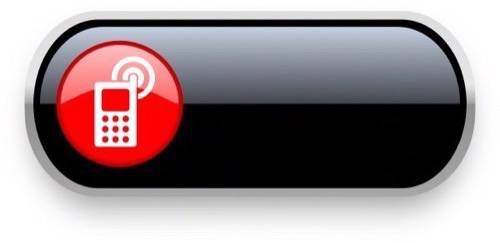
Amazon did not unveil a smartphone Thursday, despite speculation to the contrary. But its new Kindle Fire tablets give us some clues about an Amazon phone, reportedly in the pipeline. We see a $200 (almost) loss leader that makes buying anything from or through Amazon beyond easy.
An All-Amazon-Controlled Experience
The idea that Amazon will put a few of its apps on a generic Android phone and call it a day is misplaced. Amazon will control every aspect of its phone, from the way the home screen looks to the way it ties into Amazon’s Kindle bookstore, video-streaming service and music cloud locker.
Why?
Speaking Thursday, Amazon CEO Jeff Bezos said, “People don’t want gadgets anymore. They want services. They want services that improve over time.”
Bezos explainted, “Kindle Fire is a service. What does it mean for a hardware device to be a service? It greets you by name. It comes out of the box with your content preloaded. You can choose from 22 million different items. It makes recommendations for you. […] A hardware device as a service. That’s what people want.”
Amazon is all about the experience, front to back — much like Apple. Expect total Amazon control over any phone it makes.

Aggressive Prices So Amazon And Its Customers Win
Mobile pricing and profit models for mobile devices set Amazon and Apple apart. Apple makes money selling iPhones at tremendous profit and breaks even on media and app sales. Amazon prices its hardware closer to breakeven and hopes to profit on media sales.
Bezos gave some context to Amazon’s strategy this week, after introducing the moderately priced $299 large-screen Kindle Fire HD.
“Above all else, align with customers. Win when they win. Win only when they win,” he said.
How does this apply to hardware pricing?
“We want to make money when people use our devices, not when they buy our devices,” Bezos said. “If someone buys one of our devices and puts it in a desk drawer and never uses it, we don’t deserve to make any money.”
Jumping from there to a phone, Amazon is probably preparing one that’s inexpensive by industry standards, one that’s designed so that buyers will keep using it to buy Amazon media, products and services.
Depending on how Amazon distributes its phone — directly or through telcos — Amazon could offer a no-contract phone for $200 or a carrier’s standard contract phone for free.
Expect Amazon to use some of its Kindle Fire tricks, too, such as ad-supported subsidies from its special-offers program.
The Boldest Move: Going Around The Carriers?
One of Amazon’s interesting announcements Thursday was a 4G LTE wireless version of the Kindle Fire HD, with a special (low!) price for data service. Unlike other tablets — including the iPad — which require a relationship with a wireless carrier, Amazon seems to be stepping in front of the carriers here, billing customers directly for 4G service — at least for the basic package, which includes 250 MB of monthly service for a $50 annual fee. (“Customers can also choose to upgrade to 3 GB or 5 GB data plans from AT&T directly from the device,” notes Amazon.)

It would be an especially bold move for Amazon to apply this model to phones: Bypassing the typical carrier service-plan requirements, buying wholesale data capacity directly from AT&T (as it’s doing here, and as it does for the 3G Kindle), and charging a lot less for an entry-level smartphone plan than its competition.
Imagine, for instance, an Amazon phone with no monthly voice-plan requirement, fair pricing on data plans and unlimited text messaging. It could conceivably cost half what an iPhone does per month, running on the same AT&T LTE network. And this would help Amazon win with its customers and turn gadgets into services.
But: This would be risky and challenging, even for Amazon. And Bezos may decide that the distribution power that carriers have — especially domestically — is too great to fight. (That’s the lesson Google learned with the Nexus One.) Perhaps a halfway-there, hybrid approach?
Then again, don’t put anything past Jeff Bezos: If any company is ballsy enough to try an end run on the carriers, it’s Amazon.
Either way, if this week’s Kindle Fire announcement is any lesson, expect aggressive, ad-subsidized pricing and a service-focused approach with an Amazon phone. And maybe — just maybe — a bold move to disintermediate the phone companies.
Also: The Real Reason AT&T And Verizon Are Pushing New “Shared” Data Plans

















